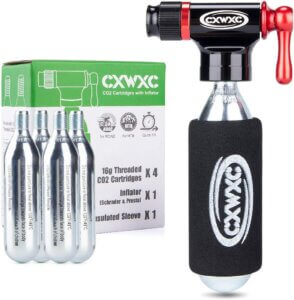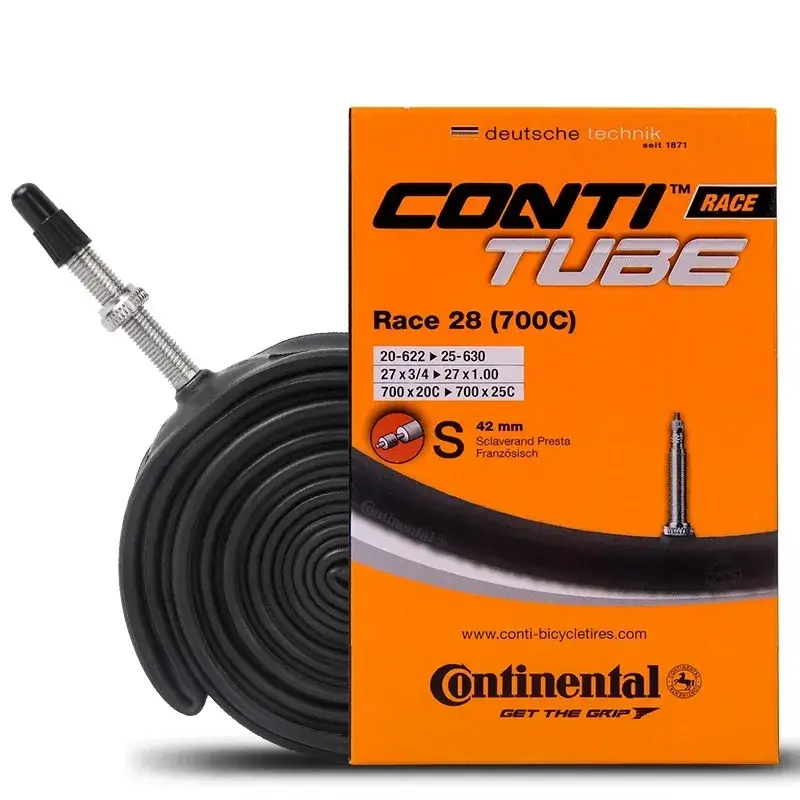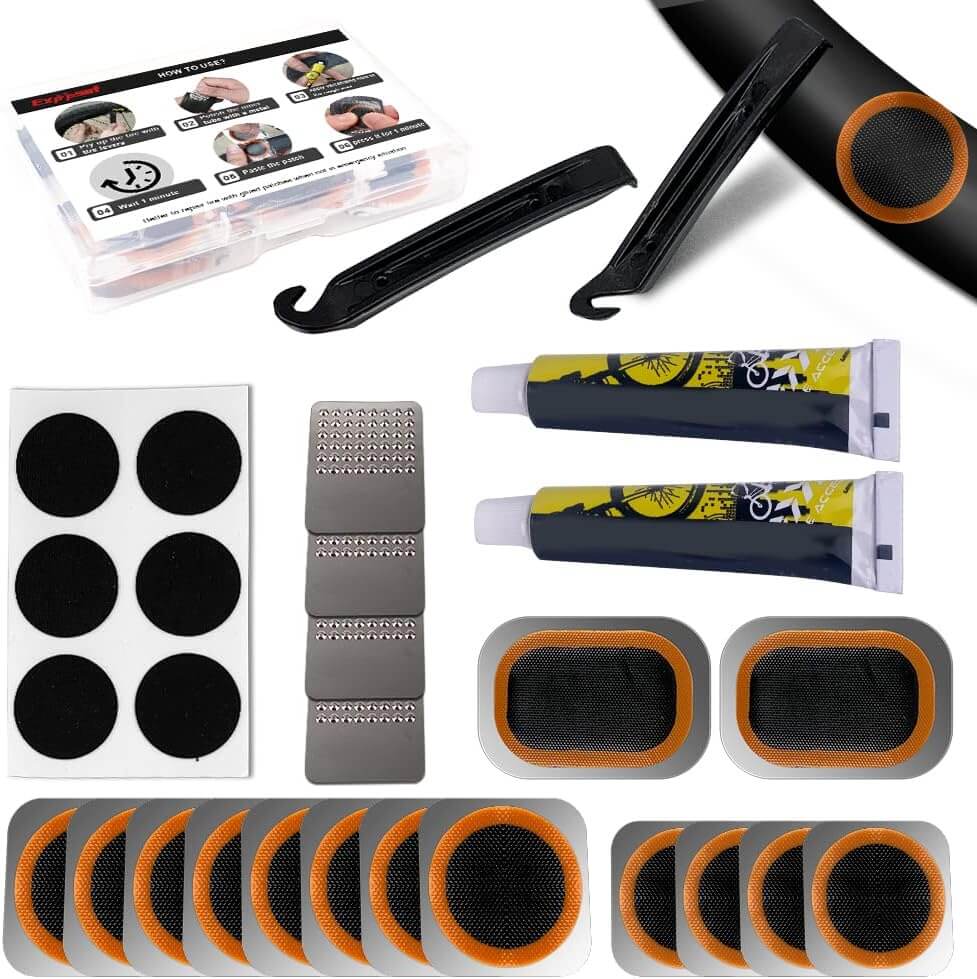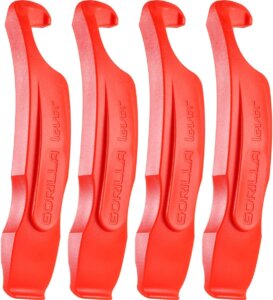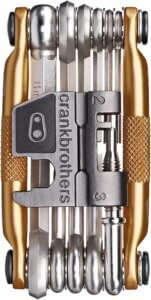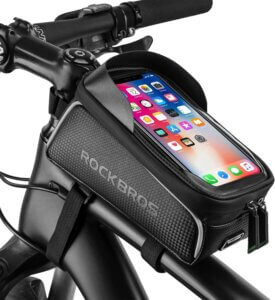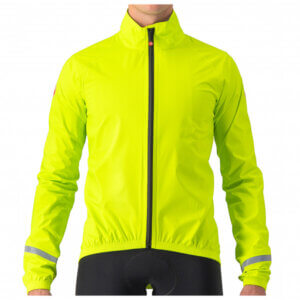Cycling is a wonderful adventure, but sometimes our bikes can throw unexpected challenges our way. By staying prepared, we can avoid turning these challenges into disasters.
Luckily, there’s a simple way to ensure you’re always ready for the ride ahead. Those three pockets at the back of your cycling jersey and a handy saddlebag have enough space to comfortably carry all your necessities.
They give you all the space you need to carry everything necessary to tackle flat tires, handle small bike issues, keep yourself fueled, stay cozy, and more. Let’s explore how these essentials can make your rides not only enjoyable but also worry-free.
1. Be Prepared for Flats: Pump or CO₂ Inflator and Canister
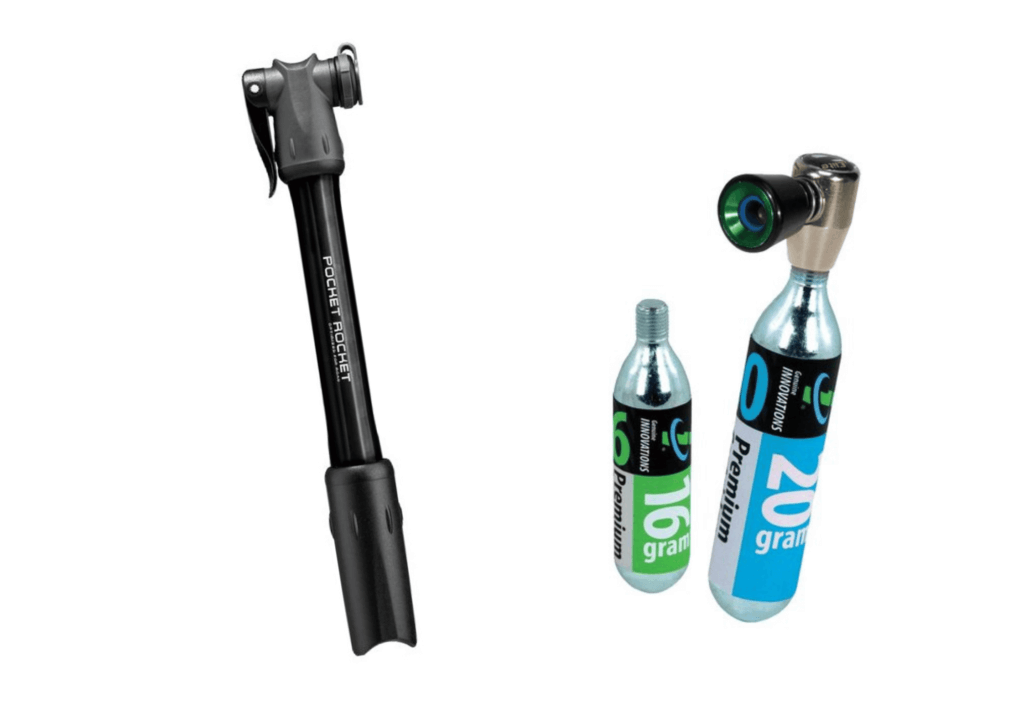
Flat tires are the most common unexpected problem you will experience with your bike, but the right tools can turn this inconvenience into a minor hiccup.
Enter the trusty pump or CO₂ inflator and canister. The mini hand pump, a classic tool found in every cyclist’s toolkit, is small enough to be kept on your bike frame or even in your pocket.
The hand pump is reliable and doesn’t need any extra parts. But, it does take a bit more arm muscle and time to pump up your tire all the way to the desired pressure.
On the other hand, the CO₂ inflator and canister combo provide a super quick and efficient solution that’s perfect for riders seeking speed and convenience. It uses small cartridges of CO₂ gas to quickly fill your tire.
It’s perfect if you’re in a hurry or want to get back to riding ASAP. However, these cartridges need to be replaced after use, and they can run out if you’re not careful. If you experience repeat punctures, you might run out of CO₂, leaving you without a quick fix.
Plus, CO₂ inflators might be a bit trickier to use if you’re not familiar with them. You don’t want to find yourself stranded on the side of the road, struggling to repair your tire.
No matter which one you choose, it’s important to practice how to use it before you’re out on the road. You don’t want to be stuck on the side of the road, not knowing how to fix your tire.
So, take a few moments to learn how your chosen tool works. Practice inflating a tire at home so you’ll be a pro when the real situation arises.
CHECK PRICE of Mini Bicycle Tire Pump
2. Swift Repairs: Spare Tubes and Puncture Repair Kit
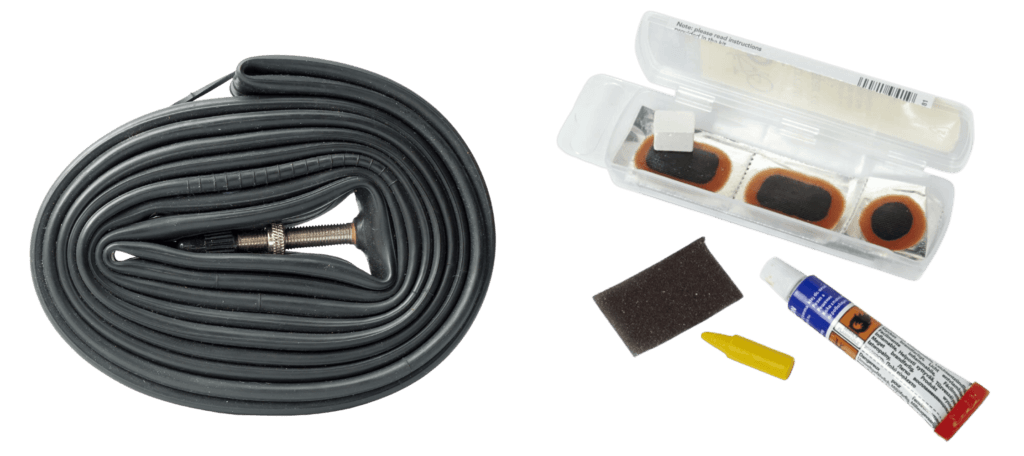
Enter spare tubes and a puncture repair kit – your go-to tools for getting back on track when the road throws you a curveball.
Punctures are an inevitable part of cycling, but they don’t have to derail your ride. When you encounter a flat tire, you can quickly swap out the punctured tube for a fresh one and keep rolling.
It’s a straightforward and efficient fix that minimizes downtime and ensures you can continue your journey without missing a beat.
It’s a wise move to carry at least two spare tubes on every cycle. Having a backup ensures that you’re covered even if you encounter a second puncture.
Sometimes, luck seems to run out, and you find yourself dealing with not just one, but multiple punctures. This is where a puncture repair kit becomes invaluable.
It’s like having a backup plan for your backup plan. With adhesive patches and tools at your disposal, you can mend damaged inner tubes and keep going even if your unlucky streak continues.
It’s a simple yet effective way to tackle unexpected challenges and turn a potentially frustrating situation into a mere hiccup.
So, the next time you hit the road, remember to pack those spare tubes and a tire repair kit. Whether you’re dealing with a single puncture or an unusually unlucky day, these tools have your back.
CHECK PRICE of Cycling Puncture Repair Kit
3. Making Tire Changes Easier: Tire Levers
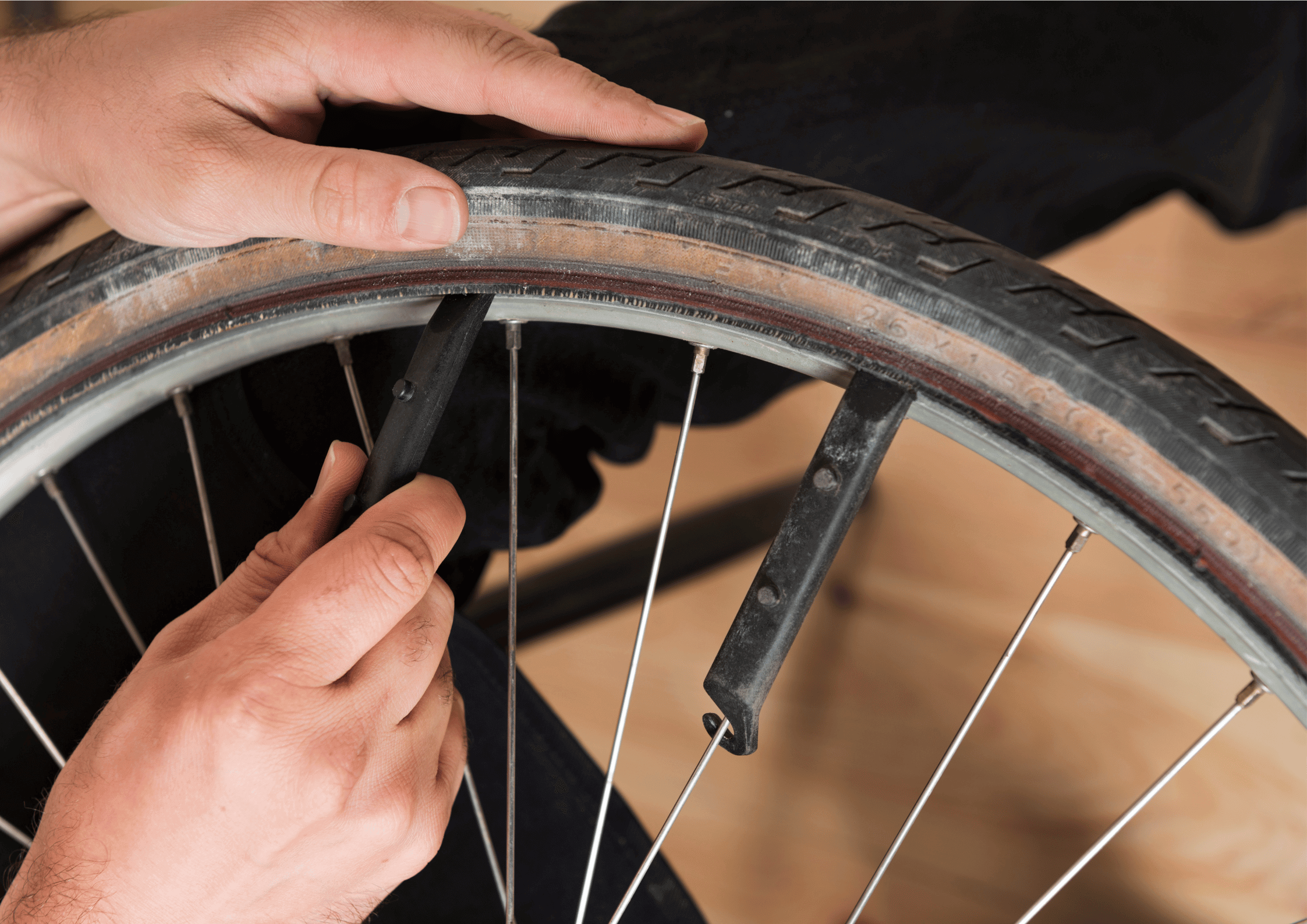
Have you ever found yourself struggling to fix a flat tire, especially with those sturdy winter tires? It can be quite a challenge to get the tire off the rim and take out the inner tube.
Sometimes, it takes a good amount of strength. But fear not, that’s where tire levers come to the rescue! These simple tools are like your helping hands when it comes to dealing with tough tires.
They make the job of taking the tire off and putting it back on much easier. These small tools provide the leverage you need to gently pry the tire away from the rim, making the whole process smoother and less of a struggle.
While tire levers are incredibly useful, there’s a trick to using them properly. When you’re putting the tire back on the rim, be cautious not to pinch the new inner tube.
This can happen if the lever presses the tube against the wheel’s rim, causing a new puncture. To avoid this, make sure to use the levers carefully and slowly, ensuring that you’re not putting too much pressure in a way that could damage the tube.
With a bit of practice and attention, you’ll become a pro at using tire levers without causing any unintended mishaps.
There are two types of tire levers – metal and plastic. Plastic levers have a leg up due to their lightweight nature, making them easier to carry and handle.
However, cheap plastic levers can be a bit fragile and sometimes snap under pressure. So, if you opt for plastic, it’s wise to invest in good quality ones to avoid any mid-tire change mishaps.
CHECK PRICE of Bike Tire Levers
4. Versatility in One Tool: Multi-Tool
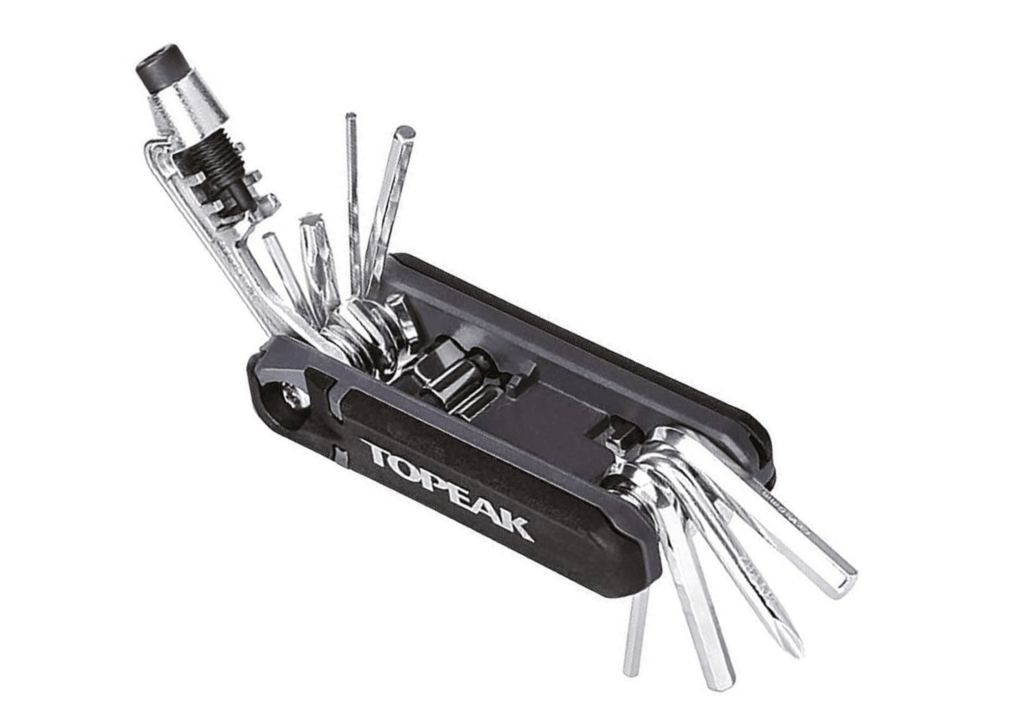
In the world of cycling, simplicity often reigns supreme. That’s where the multi-tool steps in – a compact marvel that’s like having a small workshop in your pocket.
What’s it all about? Well, imagine a single tool that houses a range of essential components: Allen keys, screwdrivers, and torx heads, all in one neat package. Small enough to fit in your pocket.
A multi-tool allows you to make adjustments to some of the most critical bolts on your bike, like those securing your handlebars, stem, and seatpost clamps. It’s the ultimate convenience for on-the-go tweaks and fine-tuning.
Make sure you get a multi-tool that has a chain tool. This means you’re prepared for those unexpected moments when you break your chain.
Now, you might carry a multi-tool for weeks without needing it, and that’s just fine. But when that rare moment strikes, and you find yourself in a bind, this unassuming tool will swoop in to save the day.
So, while it might spend most of its time tucked away, the multi-tool is your trusty sidekick, ready to leap into action whenever you need a helping hand.
CHECK PRICE of Cycling Multi Tool
5. Riding with Peace of Mind: Money
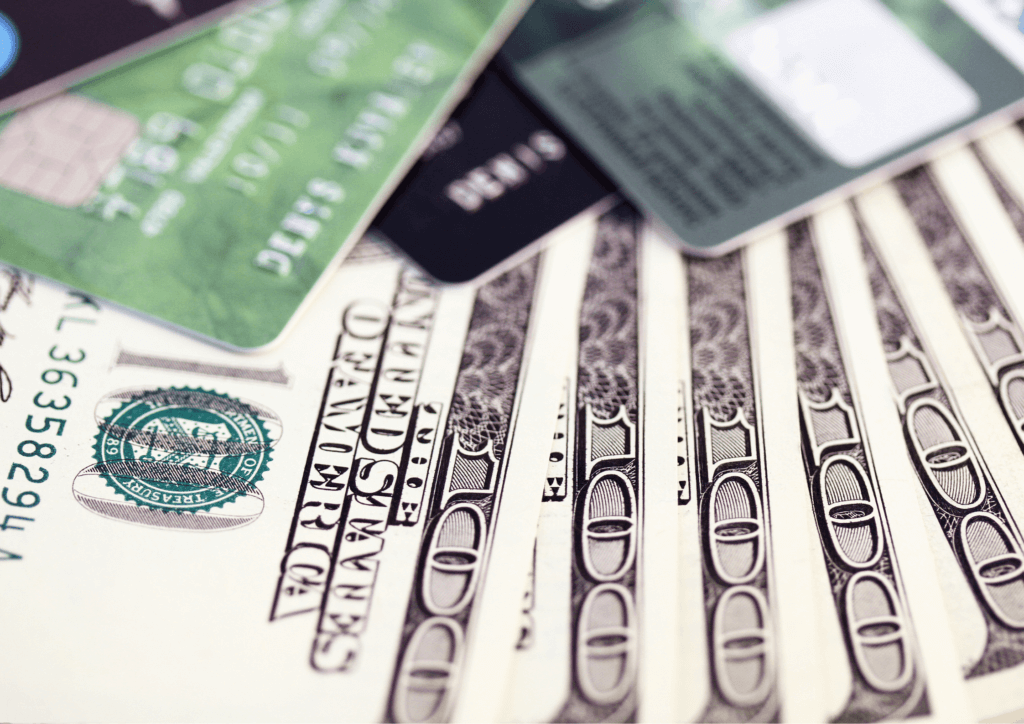
Cycling takes you on an adventure that can lead to unexpected twists and turns. While you may venture out with a specific route in mind, the road often surprises you with detours and new discoveries.
That’s why having cash on hand is more than just a convenience – it’s a smart way to ensure you’re prepared for whatever the journey brings.
While digital payment methods dominate our lives, cash remains a universal currency, especially in places where electronic transactions are impractical.
Carrying cash isn’t just about convenience; it’s about adaptability. It’s having the means to pick up essentials, enjoy a can of coke for that final stretch, or secure a taxi or train ride home during unforeseen situations.
Sometimes, even the best-laid plans can go awry. Your phone might run out of battery, or you might forget your wallet at home.
By tucking a $20 or €20 bill into your saddle bag, you’re prepared for whatever the road throws at you, ensuring a smoother and worry-free cycling experience.
And here’s a friendly reminder: if you do end up using that emergency cash, don’t forget to replace it. Just like refilling your water bottles before a ride, topping up your cash stash ensures you’re always prepared for whatever comes your way.
6. Stay Connected: Mobile Phone
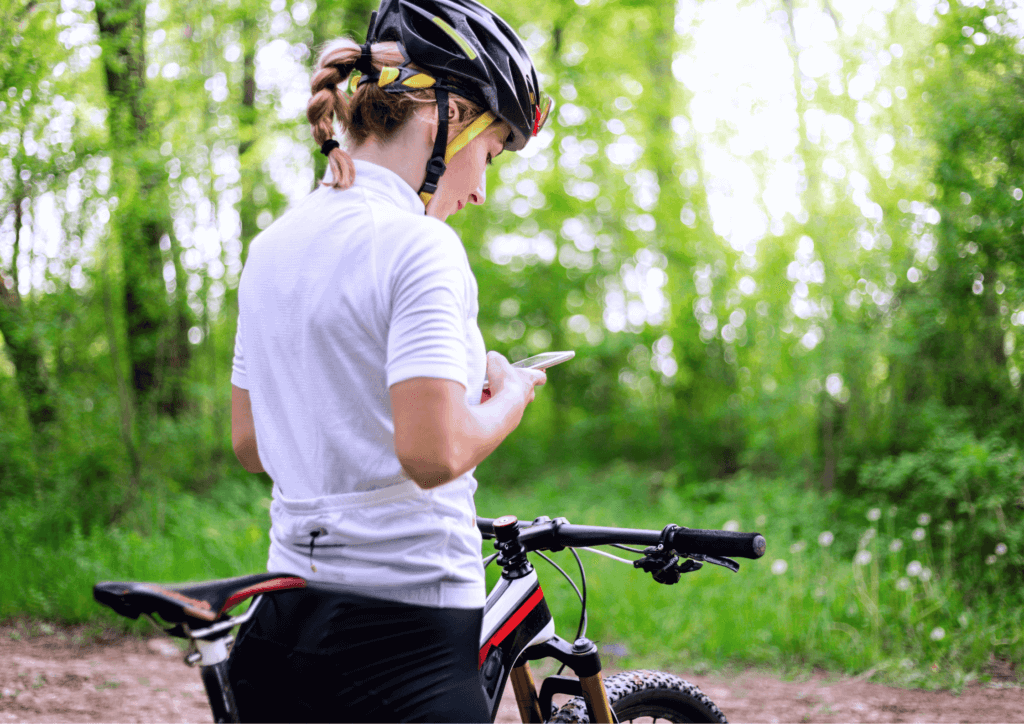
For cyclists today, your mobile phone goes everywhere that you do. It’s more than just a gadget – it’s a tool that makes your rides safer and more fun.
When you’re out exploring new places or trying tricky trails, your mobile phone acts like a guide. With navigation apps at your fingertips, you can plot your course, receive turn-by-turn directions, and explore new terrains with confidence.
But its importance goes beyond navigation. Your mobile phone is a lifeline that ensures you’re never isolated, no matter how remote the location.
In the event of unforeseen circumstances or emergencies, the ability to make a call for help can be a game-changer. It’s a comforting reassurance that should any unexpected challenge arise – be it a mechanical issue, a sudden health concern, or simply the need for assistance – you’re just a call away from finding a solution.
And here’s a smart tip: store an I.C.E. (in case of emergencies) number in your phone’s contacts. This is someone who can help if you’re in trouble. Also, make sure any security locks on your phone are turned off so you can use it quickly if needed.
Furthermore, your mobile phone is an invaluable tool for capturing and sharing your cycling journey. With its built-in camera, you can document breathtaking landscapes, epic descents, and victorious finish lines.
These snapshots not only create lasting memories but also allow you to share your experiences with fellow cyclists and friends, fostering a sense of community even when you’re riding solo.
Before you head out for each ride, make sure your phone is charged and easily accessible. Tuck it securely into your jersey pocket, attach it to your handlebars with a reliable mount, or stow it in a bike bag designed for mobile devices. For added protection from rain or sweat, consider placing it in a plastic or waterproof bag.
7. Identification: Your ID
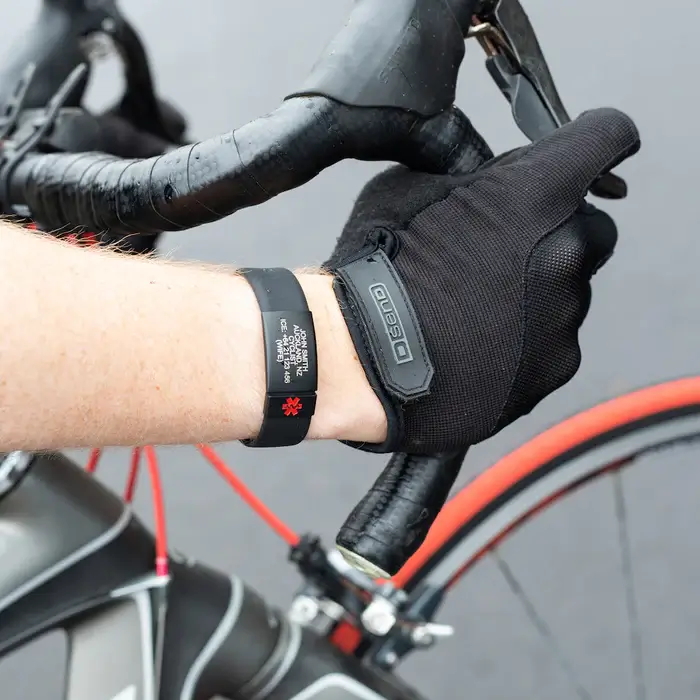
In addition to having your mobile phone handy, there’s another small yet crucial item that can significantly enhance your safety on every ride – an ID bracelet or dog-tag.
These simple accessories serve as a lifeline to emergency services and your loved ones if an accident occurs. By wearing an ID bracelet or dog-tag, you’re ensuring that vital information is readily available to those who can assist you.
This information should include the names and contact numbers of your emergency contacts, as well as any vital medical details such as allergies or known medical conditions.
In the event of an unexpected situation, having these details readily accessible can make a world of difference in ensuring you receive the care and support you need. It’s a small measure that speaks volumes about your commitment to responsible cycling and your own well-being.
CHECK PRICE of Medical ID Bracelet
8. Fuel for the Journey: Food
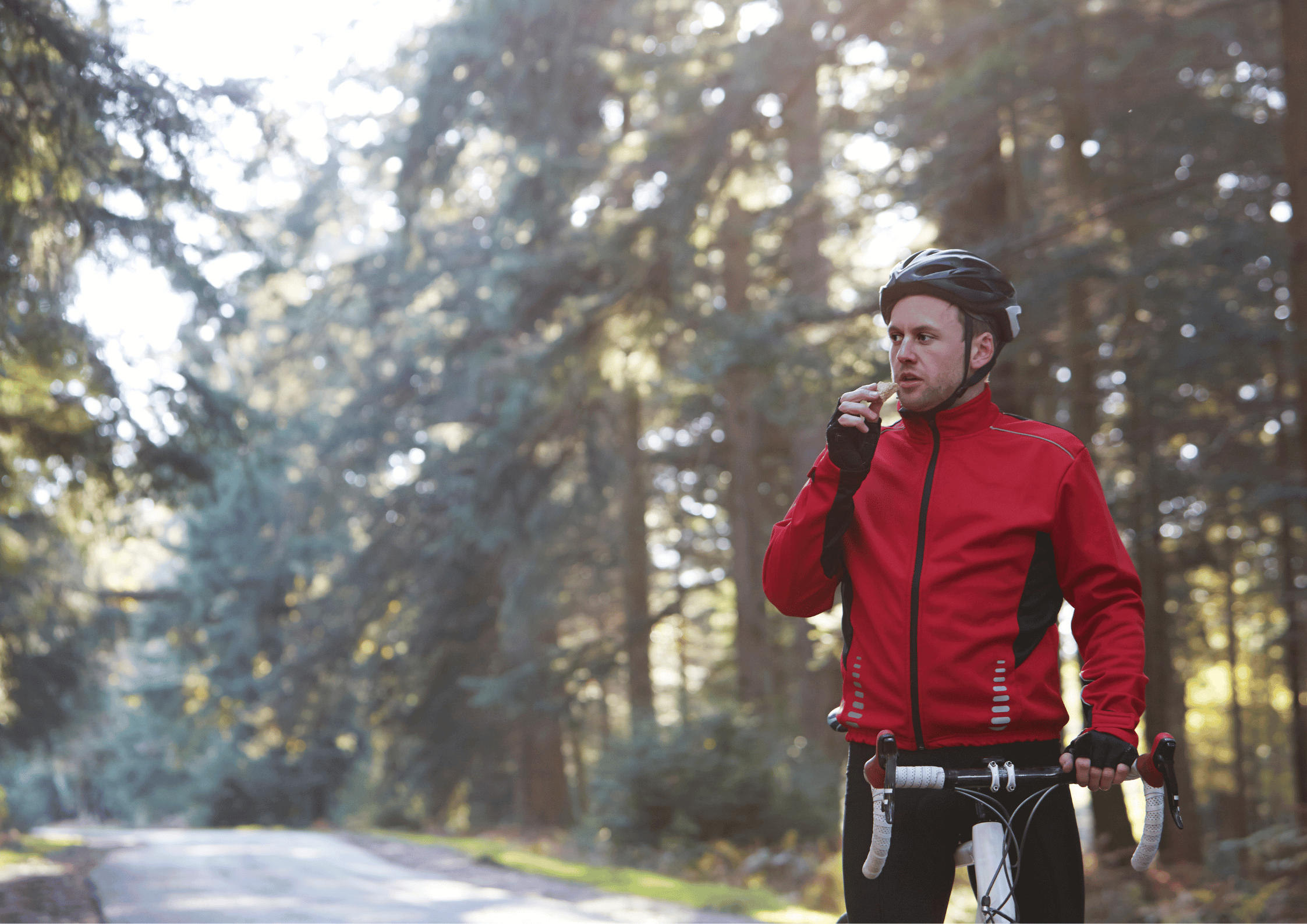
Make sure your energy levels are primed for the journey ahead by packing more than enough food to keep you going. Whether you’re embarking on a leisurely ride or a more intense session, having enough fuel is key to preventing the dreaded bonk.
Even if your ride seems short, it’s wise to have a backup plan – an emergency gel stashed in your pocket. This little lifesaver can come to the rescue if you’ve miscalculated your route, encountered a lengthy mechanical issue, or underestimated your pre-ride fuel intake.
Energy gels and bars might not suit everyone’s palate, but they’re a powerhouse of concentrated energy that can offer a swift boost precisely when you need it the most. These compact sources of sustenance can be real game-changers during a tough climb or a late-stage push.
The beauty of energy gels and bars is that they’re incredibly shelf-stable, so even if they spend months in your pocket, they’ll be ready for action when called upon.
Don’t limit yourself to gels and bars alone – there’s a whole world of portable and energy-packed foods waiting to accompany you on your ride. A humble banana is nature’s energy bar, with its natural sugars and potassium providing a quick and refreshing pick-me-up.
If you’re feeling crafty, you can also consider homemade energy bars. These bars allow you to customize the ingredients to your liking, ensuring you get the nutrients you need while satisfying your taste buds.
CHECK PRICE of SKRATCH LABS Energy Bars
CHECK PRICE of CLIF BAR Energy Bars
9. Weather Protection: Gilet/Waterproof Jacket

Even in the warmth of summer, the weather can be unpredictable. That’s why having a gilet or waterproof jacket is a game-changer.
A lightweight gilet or a waterproof jacket is your shield against these unexpected weather changes. These pieces of clothing are designed to keep you dry and comfortable, especially during sudden rain showers or chilly winds.
They’re like your secret weapon against the elements, ensuring that you can focus on the ride without worrying about getting soaked or cold.
The beauty of a gilet or waterproof jacket lies in its packability. These items are designed to be compact and lightweight, easily fitting into your jersey pocket when you don’t need them.
As the weather changes throughout your ride, you can quickly slip them on when needed and stow them away when the sun returns. It’s a hassle-free way to be prepared for the unexpected twists that Mother Nature can throw your way.


